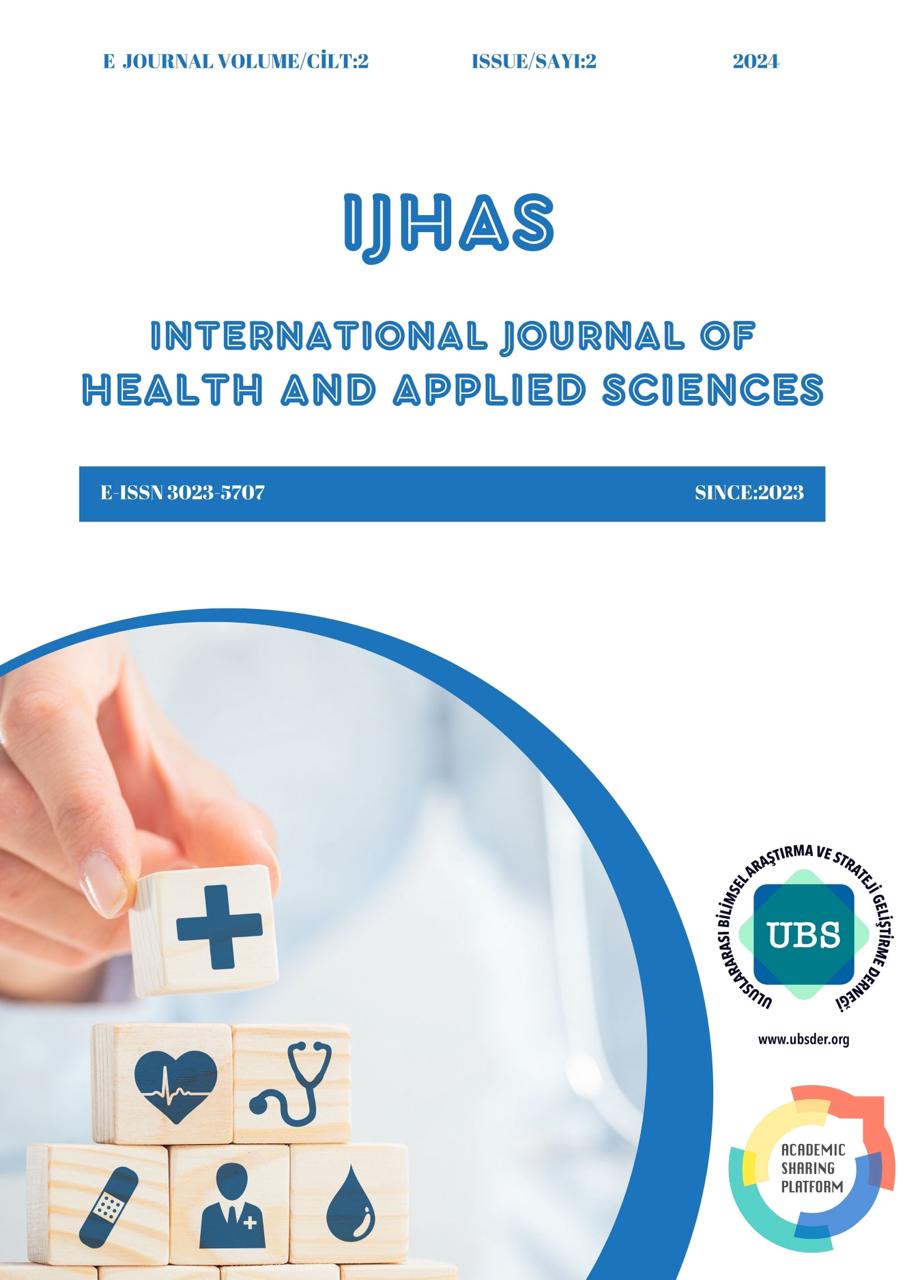AKILLI TEKSTİL ÜRÜNLERDE KULLANILMAK ÜZERE HALFETİ GÜL (R. ODORATA ‘LOUIS IV’) YAĞI İÇEREN MİKROKAPSÜLLERİN GELİŞTİRİLMESİ
DOI:
https://doi.org/10.5281/zenodo.10892546Anahtar Kelimeler:
Mikrokapsülasyon, jelatin, sodyum aljinat, kozmetik, kontrollü salınımÖzet
Mikroenkapsülasyon, aktif maddelerin etrafını bir ya da birden çok kaplama maddesi ile sarılmasını sağlayan teknolojidir. Günümüzde daha çok katı ve sıvı yağlar, esanslar, aromalar, vitaminler mikroenkapsüle edilmektedir. Mikroenkapsülasyon teknolojisinin gıda, ilaç, tarım, tekstil, kozmetik gibi endüstrilerde kullanımı artmaktadır. Kozmetik ürünlerde kullanılan gül yağı, şeffaf bir renge sahip antioksidan, antiseptik, mikrop kırıcı olmakla birlikte cilt lekelerini temizler. Halfeti gülü, Şanlıurfa civarında doğal yayılış gösteren Liliaceae familyasına (karagül) ait anatomik özellikteki Scilla mesopotamica speta ve Asphodeline damascena subsp. gigantea taksonları endemik, Tulipa aleppensis ise suriyede yetişen endemik olmayan nadir türlerdir. Son yıllarda yapılan araştırmalar sonucu ise Liliaceae familyası (karagül) popülasyonunda bir hayli azalma olduğu tespit edilmiştir. Bu çalışma kapsamında da karagül yağının önemi ve kullanım alanları araştırılarak karagülün korunma altına alınması ve üretimine ağırlık verilmesi gerektiği vurgulanacaktır. Siyahi güllerin yetişme ortamları ve yayılış alanları gözlemlendiğinde; habitatı, ışık şiddeti, yıllık güneşli gün sayısı ve sıcaklığın fazla olduğu ortamlar olduğu görülür. Çiçek rengi sıcaklık ve ışıklanma arttıkça çiçek rengi siyaha; ışıklanma süresi ve sıcaklık azaldıkça vişne rengine ve kırmızıya dönüşmektedir. Adaptasyon başarısı, renk düzeni ve koku üretme kabiliyeti diğer güllerden daha yüksektir. Bundan dolayı siyahi güllerin ekolojik özelliklerini tam anlamıyla karşılayan Güneydoğu Anadolu bölgesidir. Ayrıca halfeti gülünün sadece Türkiye’de yetişiyor olması ticari açıdan ülkemize büyük kazanç sağladığı görülmektedir. Ancak gül yağı diğer uçucu yağlardan farklı olarak 20℃’nin altında katılaşmaya başlar, 16℃’nin altında ise tamamen katılaşır ve kristalleşir. Hidrokarbon grubu bileşenlerin (parafinler ve stearoptenler) oranının artmasıyla gül yağı oda sıcaklığında bile katılaşmaya başlar ve karakteristik kokusunu kaybeder. Bu nedenle yapılacak proje çalışmasında gül yağının mikroenkapsülasyon yöntemi ile korunması ve dayanıklı hale getirilmesi amaçlanmıştır.
Mikrokapsülasyon yönteminde kaplama malzemesi olarak kozmetikte sıklıkla kullanılan, biyouyumluluğu yüksek, toksik olmayan, alerjik reaksiyonlar göstermeyen, karbonhidrat esaslı bir polimer olan jelatin kullanılacaktır. Dış kaplama malzemesi; mikrokapsüllerin morfolojik ve yapısal özelliklerini ve buna bağlı işlevsel performanslarını önemli ölçüde etkilemektedir. Bu nedenle gül yağının mikroenkapsülasyonunda jelatin ile yapılan kaplamanın yeterli olamayacağından, ikinci bir kaplama malzemesi olarak kolaylıkla elde edilebilmesi ve ayrıca biyobozunur, biyouyumlu, antibakteriyel doğal bir polimer olması nedeniyle sodyum aljinat tercih edilmiştir. Proje çalışmasında ilk olarak farklı jelatin/sodyum aljinat oranlarında gül yağını içeren mikrokapsüller sentezlenecektir. Sentezlenen mikrokapsüllerin morfolojik özelliklerinin belirlenmesi için Taramalı Elektron Mikroskobu (SEM) ve yapısal analizleri için Fourier Dönüşümlü Kızılötesi Spektroskopisi (FTIR) ve Diferansiyel Termal Analiz (DTA-TG) kullanılacaktır. Ayrıca, sentezlenen mikrokapsüllerin antibakteriyellik testleri için Gram negatif bakteri Escherichia coli (E. Coli) ve Gram pozitif bakteri Staphylococcus aureus (S. Aureus) kullanılacak olup, sodyum aljinat ve jelatinin gül yağı enkapsülasyonu için antimikrobiyal etki gösterip göstermediği ortaya konacaktır. Proje kapsamında üretilecek gül yağını içeren jelatin ve sodyum aljinat mikrokapsüllerin; kozmetik ve tekstil sektöründe önemli kullanım alanları bulması amaçlanmıştır. Ayrıca, ülkemiz için ticari bir önemi olan gül yağının yeni kullanım alanlarının oluşturulmasının ülke ekonomisine katkı sağlayacağı düşünülmektedir.
Referanslar
Altun, B. ve Özcan, T. (2013). Süt ürünlerinde probiyotik bakterilerin mikroenkapsülasyonu II: Kaplama materyalleri ve süt ürünlerinde uygulamalar. Ziraat Fakültesi Dergisi, 27(2), 105-114.
Başyiğit, B., Hayoğlu, İ. ve Atasoy, F. (2017). Kekik esansiyel yağı ve mikroenkapsülasyon uygulamaları. Batman Üniversitesi Yaşam Bilimleri Dergisi, 7, 63-70.
Baytop, T. (2001). Türkiye’de eski bahçe gülleri. Ankara: T.C. Kültür Bakanlığı Yayınları.
Boran, G.(2011). Gelatin as a food additive: Structure, Characterıstics, prodiction, application and quality. Yüzüncü Yıl Üniversitesi, Van.
de Matos, E. F., Scopel, B. S., Dettmer, A. (2018). Citronella essential oil microencapsulation by complex coacervation with leather waste gelatin and sodium alginate. Journal of Environmental Chemical Engineering, 6(2), 1989-1994.
Erikci, T. ve Kalaoğlu, F. (2011). Mikrokapsül uygulanmış kumaşı Chitosan ile kaplamanın mikrokapsüllerin yıkama dayanımı üzerine etkileri. İTÜDERGİSİ/d, 9(2), 135-146.
Eyüpoğlu, Ş. ve Kut, D. (2016). Mikrokapsülasyon teknolojisi ve tekstil sektöründe kullanımı. İstanbul Ticaret Üniversitesi Fen Bilimleri Dergisi, 29, 09-28.
Ghosh, S.K. (2006). Functional coatings and microencapsulation: A General Perspective, Functional. Coatings, 3-527-31296.
Girgin, B. (2016). Melatonin yüklü aljinat/gam arabik kürelerin üretimi ve ilaç salım özelliklerinin araştırılması. Adnan Menderes Üniversitesi, Aydın.
Gökmen, S., Palamutoğlu, R. ve Sarıçoban, C. (2012). Gıda endüstrisinde enkapsülasyon uygulamaları. Gıda Teknolojileri Elektronik Dergisi, 7, 36-50.
Gönülşen, İ. (2013). Portakal yağı içeren mikro ve moleküler kapsüülerin salım davranışlarının incelenmesi. Yüksek lisans tezi, Dokuz Eylül Üniversitesi, İzmir.
Güngör, Ö., Zungur, A., Koç, M. ve Kaymak-Ertekin, F. (2011). Mikroenkapsülasyon amaçlı klasik ve ultrasonik yöntemlerle emülsifikasyon: Emülsiyon stabilitesi, reolojik özellikler ve damlacık boyutu. 7. Gıda Mühendisliği Kongresi, 24-26 Kasım, Ankara.
İşmal E. ve Yüksel, E. (2016). Tekstil ve moda tasarımına teknolojik bir yaklaşım: Akıllı ve renk değiştiren tekstiller. Yedi: Sanat, Tasarım, Bilim Dergisi, 16, 87-98.
Karagül, E. (2018). El ve vücut kremi, Elruha Karagül araç kokusu, Elruha Karagül kolanyası. http://www.el-ruha.com/elruha-karagul-el-vucut-kremi/
Madene, A., Jacquot, M., Scher, J., & Desorbry, S. (2006). Flavour encapsulation and controlled release-a review. International Journal of Food Science and Technology, 41, 1-21.
Özçelik, H. (2018). Türkiye’nin siyahi yediveren güllerinin tanıtımı. KSÜ Tarım ve Doğa Dergisi, Süleyman Demirel Üniversitesi, Isparta.
Özçelik, H., Özgökçe, F., Ünal, M. ve Korkmaz, M. (2012). The diversity centers and ecological characteristics of Rosa L. (Rosaceae) Taxa in Türkiye. International Research Journal of Plant Science, 3(10), 230-237.
Sisley Black Rose Precious Face Dry Oil. (2018). https://www.sevil.com.tr/sisley-black-rose-precious-face-dry-oil.html
Yılmaz, E. ve Öndoğan, Z. (2014). Fonksiyonel tekstillerde yükselen trend kozmetik tekstiller. XIII. Uluslararası İzmir Tekstil ve Hazır Giyim Sempozyumu, 2-5 Nisan.
Web-1. Isparta gülünün Türkiye ekonomisine katkısı yıllık 40 milyon euro! (11.10.2017) http://www.milliyet.com.tr/isparta-gulunun-turkiye-ekonomi-2535014

İndir
Yayınlanmış
Nasıl Atıf Yapılır
Sayı
Bölüm
Lisans
Telif Hakkı (c) 2024 Rahan GÜL

Bu çalışma Creative Commons Attribution 4.0 International License ile lisanslanmıştır.





